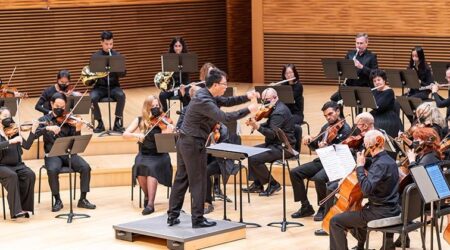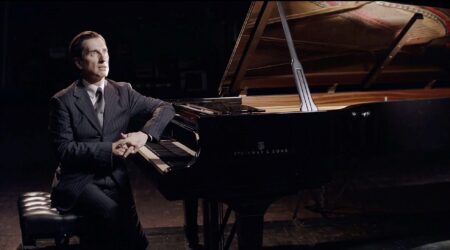Adventures in Argentina
In search of a new city to meet and befriend, I thought, with practicality in mind, of a beautiful “European” city, renowned for its culture and history that was still affordable for the exchange rate of the dollar. It was a destination unlike any that I had visited before and so, completely unsure of what […]

In search of a new city to meet and befriend, I thought, with practicality in mind, of a beautiful “European” city, renowned for its culture and history that was still affordable for the exchange rate of the dollar. It was a destination unlike any that I had visited before and so, completely unsure of what to expect, I flew to Buenos Aires, the Paris of South America.
On this one-month adventure, I dusted off my Spanish dictionary and hoped that my knowledge of Italian would suffice. We arrived on a cold fall day after fifteen hours of flight completely incredulous of the fact that we are standing on the South American continent, on the opposite side of the world, in the opposite season.
My first reaction upon arrival, as with any new city, was one of nervousness—for all of the potential situations that could, and would, arise. I was overwhelmed, seeing the city for the first time, at all of the sights to be seen, people to be met, and memories to be made. Since we would be there for a month, we rented a great apartment from a highly-recommended site we found in the New York Times, ApartmentsBA.com. From this as our base, we began our exploration.
One of the first places we visited because of its proximity to our apartment in the upscale Recoleta district was the grand Recoleta Cemetary, home of Evita Peron, the first mayor Buenos Aires General Alvear, and former presidents of Argentina, such as Domingo Sarmiento. It is a cold and awe-inspiring collection of architecturally marvelous mausoleums, graves from centuries past, and hauntingly beautiful angels overlooking the occupants. But there are living occupants as well. Some seventy-five stray cats call the Recoleta Cemetary their home and they are regularly fed by a group of devoted people. Donations of cat food are gladly accepted. At night, the quiet area around the cemetery comes to life, no pun intended, with many restaurants, nightclubs, and bars. It’s as good a place as any for the active nightlife because, after all, it’s not like you can wake the neighbors.

Which brings me to one of my many observations about the Portenos (pronounced por-TEN-yos), or residents of Buenos Aires. They are night owls—staying out well past 4am and we were surprised to discover grade-school children staying out until 1am, as late as us, the jet-lagged travelers. But despite the late-night outings, there were few examples of public intoxication and those were tourists. Unlike their North American counterparts, no one seemed to go out with the intention of getting drunk.
By day we explored the historically and visually rich neighborhood of San Telmo. Once the home of Buenos Aires’ elite and later occupied by poor immigrants, it at the same time reveals the glamour of its past and the story of the birth of tango. Plaza Dorrego, the center of San Telmo, boasts historic cafes and enchanting tango dancers, among them “El Indio”, a tall, handsome, and graceful tango dancer with an air of mystery. San Telmo is also home to many antique shops and a large market of miscellaneous vintage goods. For those in search of clothes, it is also the best place to find unique and inexpensive clothes by local designers. After the shopping tires you out, you can repose in one of the many cafes that line the streets. Wandering the calm cobblestone streets on a weekday to a small café for a hot coffee and respite from the cold is one of the sweetest pleasures and most inspiring things to do. Therefore, it is no wonder that so many cafes claim fame as having been frequented by many famous authors such as Jorge Luis Borges and Federico Garcia Lorca. Because we happened to be in Buenos Aires during a farmer’s strike, the cafes also became good places to watch the protests in support of the farmers.

The next neighborhood that caught our eye was the chic Palermo district, so large that it has been further subdivided into smaller areas such as Palermo Hollywood and Palermo Soho. This is where Buenos Aires’ youth go to demonstrate their style. The streets are full of interesting boutiques, but they are overpriced solely because they are located in Palermo. The center of the nightlife is Plaza Serrano, surrounded by various pubs with different settings or themes, from a spaceship to the tropical and no matter the cold, the youth are out in packs. And here comes my next observation—the residents of Buenos Aires are a very stylish group. No matter the occasion or the weather, they always seem to be well put-together and have put extra thought into their attire. In fact, the only people wearing sweatpants are the uniformed school children that flood the streets from time to time.
If you want to escape the hectic and smoggy city (and the country for that matter) then grab your passport and take a short ferry to Colonia del Sacramento in Uruguay. The historic part of the small town is enchanting with a lighthouse, beachfront homes, and cobblestone streets enticing you to explore them. There are old cannons and even a drawbridge from the colonial times. Exploring the aged alleyways and the picturesque nooks may even inspire you to invest in a beachfront property of your own.
Returning to Buenos Aires by boat begins to feel like coming home—where we no longer need a map and orient ourselves with ease. We’ve already explored these streets, discovered the cafes, acquainted ourselves with these people and their ways. We’ve tasted the cuisines, among them the magical steak that is carved with a spoon, and we’ve savored these memories like the treasures they are. But of course, it wasn’t without blunder and here is the list of things that we took for granted about America but lacked in Buenos Aires:
 Being acclimated to the local germs—because pneumonia so far away from home, no matter how exotic, is never fun.
Being acclimated to the local germs—because pneumonia so far away from home, no matter how exotic, is never fun.- Being in time with the locals—eating in an empty restaurant because the Portenos eat late or showing up to a closed store because many places have random schedules is often quite awkward.
- The ability to understand—whether it’s youth slang or your doctor, without making a fool of yourself.
- The no-smoking-indoors laws in American—because no one takes them seriously in Buenos Aires and it takes a long time to air out your clothes.
- The laws about picking up after your dog—because Buenos Aires’ sidewalks are mine fields.
- The driving laws—near-death accidents stop being funny real quick.
However, the list of things we dearly miss exceeds the first list:
- The exchange rate—a steak dinner costs $15 and a cab can take you most anywhere in the city for under $5.
- The steaks—the most tender and mouth-watering steaks you’ll ever experience.
- The coffee—Starbucks has nothing on this.
- The amount of people on the streets at any given time and the general liveliness of the city.
- The markets—selling multitudes of artesian goods for every taste.
- The stylish people that are a veritable pleasure to people-watch.
- The care they put into presentation, whether it’s pouring your Coca Cola into a wine glass or wrapping your clothing purchases delicately in tissue paper and adding a bow.
- The enthusiasm for soccer and therefore the fun in watching a game live or in a restaurant.

All in all, Buenos Aires was not what I expected yet it surpassed my hopes. The feel of European influence is very strong. It is a remarkably unique city with a rich Jewish heritage (after all, it is the only place outside of Israel with a Kosher McDonald’s). Buenos Aires has something for everyone, just don’t forget to bring your sense of style.
Tatiana Sundeyeva enjoys travel, literature, puns, and anything with an unhealthy sugar content. And not necessarily in that order. She is a graduate of UC Berkeley where she got a degree in English with a minor in Italian.





